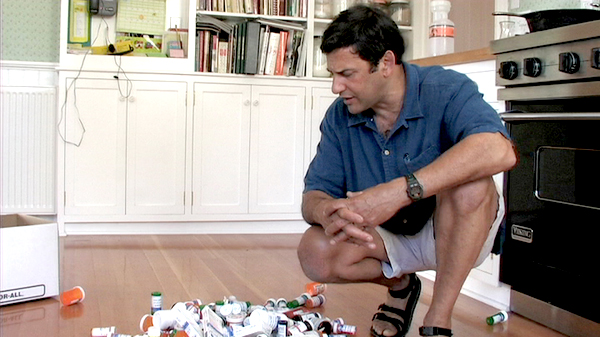|
Reviews of Recent Independent, Foreign, & Documentary Films in Theaters and DVD/Home Video

UNDER OUR SKIN Andy Abrahams Wilson’s Under Our Skin opens with Mandy Hughes, a charming former marine animal trainer with chronic Lyme disease who has been reduced to a twitching, quasi-paraplegic wreck. On a good day, it takes her an hour to walk across the house. On a bad day, she can’t move at all. The case studies go on: a roadie consumed by gnawing joint pain, a park ranger who struggles mentally through something as simple as a road trip, and dozens of other sufferers dealing with obstinate doctors and reluctant insurers. It's a bewildering ordeal, and one most Americans are completely unprepared for. Unfortunately for those expecting the next Sicko—a camp that occasionally seems to include an overreaching Wilson—the trouble here is more nuanced than wicked HMOs. Chronic Lyme patients frequently suffer from autoimmune deficiency, which produces quick shifting and wildly varied symptoms. As a result, it’s remarkably difficult to be diagnosed with Lyme disease. A recent Johns Hopkins study found that the standard testing procedure for Lyme misses 75% of all cases, which adds up to thousands of people in the dark about what’s happening to their bodies. For reasons that remain unclear, the medical community has approached chronic cases with extreme skepticism, and insurance companies have jumped on the chance to deny “experimental coverage” and drive Lyme friendly doctors out of business. Lyme groups have formed in response—watch for the green ribbon—and battle lines have hardened between skeptics who claim the disease runs its course after two weeks of antibiotics and “Lyme-literate” doctors who are willing to accept chronic Lyme disease as a diagnosis. Even with the proper diagnosis, the treatments options are thin. Under Our Skin puts its faith in long-term antibiotic treatment, but pumping oneself full of Doxycycline for years on end is more dangerous for patients than the film would like to admit. It carries a very real risk of liver damage, and it’s far from a silver bullet. The film finds a few heroes and villains in the medical field (Gary Wormser of the Infectious Diseases Society of America comes off looking particularly bad, dismissing chronic Lyme wholesale), but in the meantime, Lyme research has slowed to a crawl because of all the political bad blood. Researchers don’t want to stake their career on a disease that the health industry seems to be doing everything in its power to discredit. And without research, the treatment and diagnosis options aren’t likely to get better any time soon. But why is the industry so reluctant to recognize chronic Lyme disease? The movie raises a lot of troubling questions without offering much in the way of answers. One potentially guilty party is the health care industry—long-term treatment is expensive, after all—but it doesn’t quite add up. Lyme is one of only a handful of diseases discovered and researched entirely during the reign of HMOs, but the same corporate system did remarkably well researching AIDS, a much more complex and politically charged disease. The film
over-sensationalizes the subject a fair amount, including putting
forward a troublingly irresponsible theory about transmitting Lyme
through sex (a claim no doctor or journalist is willing to come within
miles of), but the fact remains that the public may be more likely to
get accurate Lyme information from this film than from their
doctor. Which suggests something has gone seriously wrong. R.
Brandom
|

